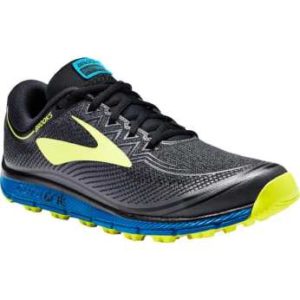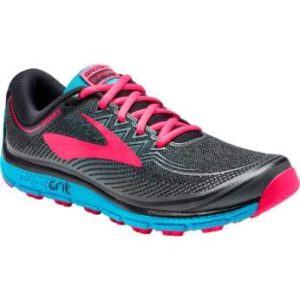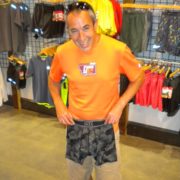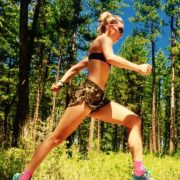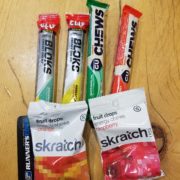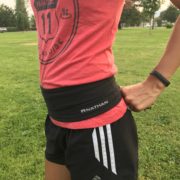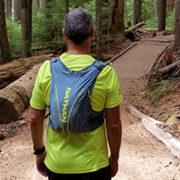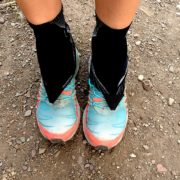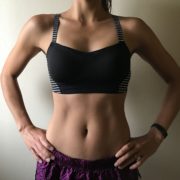Jesse Carnes is a RErun Ambassador for 2017/2018. He is an accomplished triathlete and trail runner and recently ran all three rut races in the same weekend (VK, 28K, 50k). Jesse has been in the endurance world for years and has used a variety of nutrition products over so we asked him to give us a brief run down on differences in a few of the products on our shelves. You can follow Jesse’s adventures here.
This review starts long before it should, but you know, there is always a back-story for everything, and even a simple shoe review can’t escape that fate on occasion. So bear with me, it’s relevant (sort of).
So we begin around the turn of the century, when soon-to-be high-school freshman Jesse went into his local running store to purchase some shoes to train for his upcoming cross country season. I was excited to try on all the shoes I could, and find something that fit just perfectly, so that I could be fast and comfortable and never get injured. But mostly fast. Let’s be honest, the rest of that stuff was all kind of an afterthought, just because my parents and the guy at the running store told me they were important. Bear in mind, if trail-running specific shoes could be found at all at the time, they were a strange hybrid of clunky hiking boots and running shoes that looked something like this.
Anyway, I was excited to try on a pair of fancy new Brooks shoes, because a couple of the super-cool, super-fast seniors on the team wore Brooks, and they must be the best. After the guy at the running store pulled them out of the back, I excitedly slipped them on, but to my dismay, they felt awful on my foot. The midfoot was too wide, the arch too flat, they felt clunky. I hoped maybe they would feel better running down the sidewalk, but everything was all wrong. I tried another pair, and felt the same way about them. I ended up finding myself a nice pair of Mizunos and deciding that Brooks shoes just weren’t for me.
That’s how my ill-advised mental block against the entire line of one brand of shoes began, and it has been a difficult thing to escape. However, it has been nearly two decades, and the time has come for Brooks and me to sort out our differences and find common ground.
And so, about a month ago, I cautiously laced up a pair of Brooks PureGrit 6’s, hoping for the best, but preparing for the worst. As it turns out, a lot can change in two decades. Here are my takeaways from trying out the PureGrit 6’s, divided into categories.
Purpose
With 4mm of drop and relatively little cushioning, the PureGrit 6 is a fairly lightweight, minimal training or race shoe. If this isn’t your cup of tea, it might be worth looking into something with more substantial support and cushion, like the Adrenaline or the Cascadia.
Fit
When I first slipped these shoes on, they felt pretty decent. If anything, the toe box is a hair tighter than what I am used to, but not uncomfortably so. The heel is very secure, which I really like. I have a particularly narrow foot, and finding a shoe that efficiently wraps my arrowhead of a heel can be a challenge. It is worth noting that the more I run in this shoe, the better the fit gets. They use a proprietary midsole they call BioMoGo DNA, and the whole point is that it molds to your foot shape to provide a comfortable and responsive fit. The more I run in these shoes, the more I am convinced it works.
Also of note: after receiving some negative reviews on the tongue, upper, and laces, of the PureGrit 5 in relation to their ability to spread out pressure on the top of the foot, as well as some durability issues, it seems they have made some big changes in this iteration. I found the upper, tongue, and lacing system to be supremely comfortable. They also have a very nice little pocket on the tongue for your laces, for those who prefer not to have them flapping in the breeze. I cannot speak to the durability of these shoes yet, as I have not put enough miles on them yet to wear anything out. Ask me in a couple months (if the smoke ever lets up) and I’ll let you know.
Uphill Performance
This is the most impressive characteristic of this shoe, and I noticed it immediately on my first run. While they are fairly light, the weight is nothing revolutionary. Mine weighed in at 8.65 ounces, which is very comparable to most shoes in this category in my size. What gives these shoes the edge, I think, is again the midsole, which has a certain amount of spring that I felt put more pep in my step than most shoes I have tried.
Downhill Performance
On faster, non-technical descents, I felt this shoe did well. The heel shape effectively rolls the foot forward, which means heel-strikers may experience less jarring. If the shoe lacks somewhere, it is in aggressive technical descending. The grip on the outsole is not bad, but the overall stability could be better. Where I notice this most is on off-camber corners or rocky sections of trail where you never know what angle your foot might hit the ground. The saving grace on rocky terrain, though, is that the rock plate in this shoe is very effective. I found that when I did hit those unavoidable sharp rocks (okay, maybe for the sake of this review I aimed for them on occasion), the pressure was spread out effectively and the shoe was quite comfortable.
Hey, it matters. It’s one of the sleeker-looking shoes on the market, but it only comes in one color each for men and women, so hopefully these color schemes do the trick for you.
Final Thoughts
While I wouldn’t immediately reach for this shoe for an overly technical race where off-trail, kamikaze-style descending is particularly beneficial (think The Rut 28k or 50k), I think it makes a phenomenal shoe for hill climbs or races with hard-pack trail descents (think Bitterroot Runoff 10-miler or possibly Snowbowl 15k). It does feel like a race shoe, but I would also use it for lighter training runs. I think this is the perfect shoe for doing variable-grade intervals in the North Hills. And who doesn’t love that?


